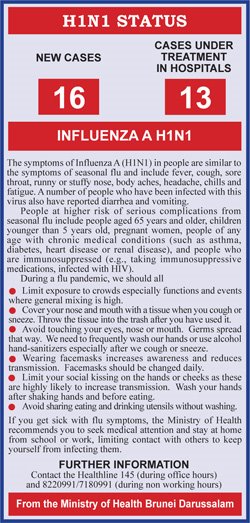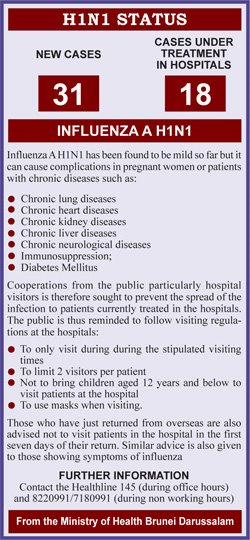By Ben Ng & Amie PDH Ishak
Photos: Azrol Azmi & Syafiq Affendy
 Youth wearing a facemask showing his favourite footbal team logo.
Youth wearing a facemask showing his favourite footbal team logo.
Wearing masks of various colours to match their outfits
With all the different types of facemasks available, it seems some youths have started wearing trendy masks as fashion statements regardless of the mask's effectiveness.
Teens sporting masks with printings of cartoons can be seen with some wearing coloured masks that match their outfits. Some teens proudly display their favourite football team logos on their masks, reports say, which brings up an even more important question: how effective are the masks against Influenza A (H1N1) anyway?
According to the US Centre for Disease Control and Prevention (CDC), facemasks help stop droplets from being spread by the person wearing them, while also keeping splashes or sprays from reaching the mouth and nose of the person wearing the facemask.
"They are, however, not designed to protect you against breathing in very small particles," the CDC says, "and facemasks should be used once and then thrown away in the trash".
Neither a facemask nor a respirator will give complete protection from the flu, which is why it is important to wash your hands often, to cover your coughs and sneezes with a handkerchief or your arm, and to avoid crowds and gatherings during a pandemic.
At present, evidence suggests that the main route of human-to-human transmission of the new Influenza A (H1N1) virus is via respiratory droplets, which are expelled by speaking, sneezing or coughing.
Complicating things further, the World Health Organisation (WHO) said on its website that using a mask incorrectly however, may actually increase the risk of transmission, rather than reduce it.
"If masks are to be used, this measure should be combined with other general measures to help prevent the human-to-human transmission of influenza, training on the correct use of masks and consideration of cultural and personal values," the WHO said on its site.
According to the website, any person who is in close contact (approximately one metre) with someone who has influenza-like symptoms (fever, sneezing, coughing, running nose, chills, muscle ache etc) is at risk of being exposed to potentially infective respiratory droplets.
In health-care settings, studies evaluating measures to reduce the spread of respiratory viruses suggest that the use of masks could reduce the transmission of influenza.
"In the community, however, the benefits of wearing masks have not been established, especially in open areas, as opposed to enclosed spaces while in close contact with a person with influenza-like symptoms," the WHO stated.
Meanwhile, a spokesperson from the Health Ministry said, "any precaution you take, counts", while also urging the community to wear masks while visiting hospitals.



No comments:
Post a Comment